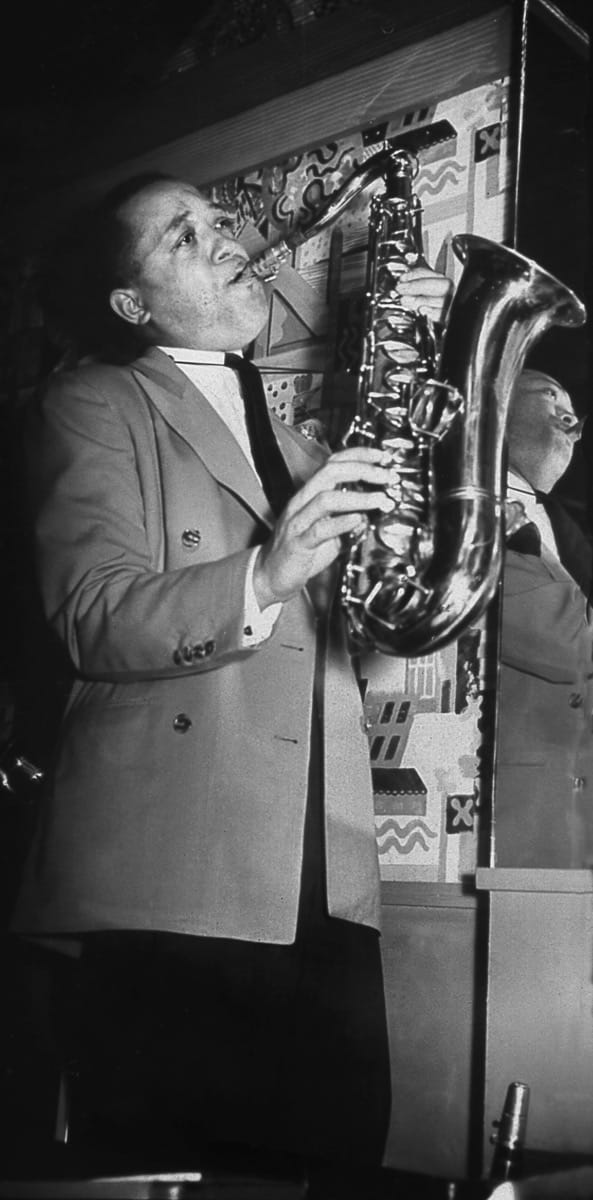The results of its Fifth Annual Jazz Poll are presented along with other “entertainment for men” in the February issue of “Playboy”. According to Leonard Feather, who writes a happy essay about the 1960 scene, this is “the biggest popularity poll in jazzdom”.
It would be quite easy to say of this poll that it doesn’t swing or mean a thing, but unfortunately it is a partial reflection of or on both jazz criticism and the machinations of publicity agents. Unlike the polls in “Metronome” and “Down Beat”, this is obviously participated in by a larger proportion of the general public, by the kind of people who like jazz and go to listen to it, but never bother reading the magazines devoted to it. We may feel very superior to the four thousand souls who voted Chet Atkins into second place as jazz guitarist, but we should never forget that we share a common interest and that even together we are outnumbered. In other words, all of us compose a minority which likes music.
The election of Stan Getz as top tenor always seems particularly infuriating to Negro jazz enthusiasts. Invariably they cite, in and out of print, his enormous debt to Lester Young
The European reader might interpret the results as indicating a considerable degree of racial prejudice. It exists, of course, and to be Caucasian remains a major asset in the jazz field. We remember a bunch of Connecticut connoisseurs deciding, with special emphasis and pleasure, that the tenor solos by the “white guy” had been the highspot of an Ellington concert. Musical segregation has been broken down on some levels, but it remains at others. It often seems to be exercised by bookers rather than the public. Rhythm-and-blues packages, containing famous artists, may appear in the same halls as white attractions, but they are not advertised in the same way or in the same places. We were surprised to see from a bill in a barbershop that Brook Benton and Paul Williams were appearing one Sunday at a nearby dance hall. The local newspaper for that very day carried an ad for the appearances of Woody Herman and Maynard Ferguson on the Sundays before and after respectively. Benton’s deserved popularity certainly extends across racial lines and the issue here was presumably not one of prejudice but of laying out the advertizing money to the best advantage. Maybe he can fill the hall with less advertising. We’ll see.
Although there have, in our opinion, been more flagrant examples of injustice in jazz polls, the election of Stan Getz as top tenor always seems particularly infuriating to Negro jazz enthusiasts. Invariably they cite, in and out of print, his enormous debt to Lester Young. The playboys put him first with 10,258 votes, Coleman Hawkins second with 5,633 and Coltrane third with 5,077. The educated readers of “Down Beat”, on the other hand, gave Coltrane 2,945, Getz 1,495 and Hawk 574. The voters in “Metronome” were of the same mind: Coltrane 933, Getz 515, Hawk 307.
So polls and bulls have more in common than two l’s. Though bulls are necessary to cows, polls are not necessary to jazz, but they are indicative of possible turn-out by paying customers. To playboys, the most popular leader in jazz is Stan Kenton, the most popular singer Frank Sinatra, the most popular pianist Dave Brubeck, the most popular alto Paul Desmond, and so on. 16,891 of them rated Miles Davis top jazz trumpet, 5,677 put Chet Baker sixth, and 594 put Clark Terry twenty-sixth. Shelly Manne leads the drummers with twice as many votes as second-place Gene Krupa, Jimmie Crawford, Panama Francis and Oliver Jackson – who they? Of Dicky Wells they never heard either, but then, as Jonah Jones says, he is just about the most underrated man in jazz. Come into the dark and lament, baby, along with Robert Frost’s birds!
















